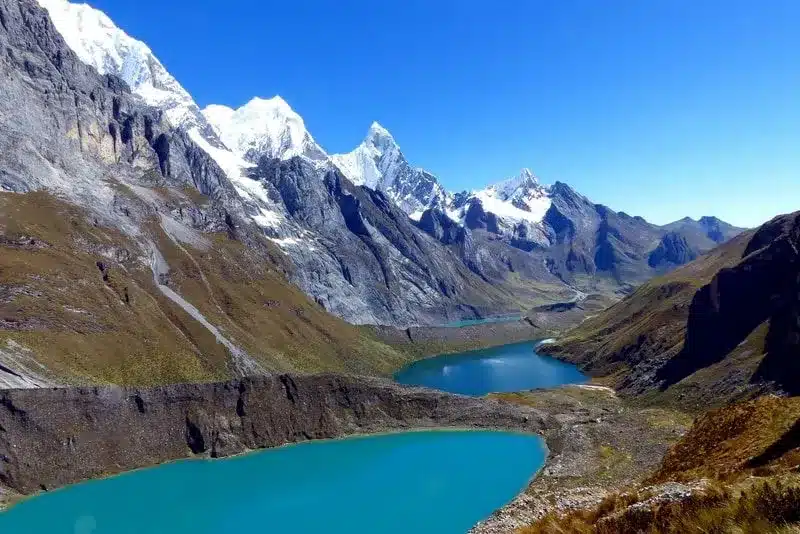About Glacial Lakes:
- A glacial lake is a body of water that originates from a glacier.
- It typically forms at the foot of a glacier, but may form on, in, or under it.
- ISRO categorised glacial lakes into four broad categories based on how they were formed — moraine-dammed, ice-dammed, erosion-based, and ‘others’.
How do glacial lakes form?
- As glaciers move, they erode the terrain under them, leaving depressions and grooves on the land.
- When they churn up rock and soil, they etch ridges of debris known as moraines.
- Most glacial lakes form when a glacier retreats and meltwater fills the hole left behind.
- However, natural dams, formed out of ice and terminal moraines, can also form glacial lakes.
- An ice dam forms when a surging glacier, which can move up to 100 times faster than an average glacier, may dam up meltwater as it closes off a valley or fjord and prevents it from draining.
- Dams formed by moraines can be dense and stable, holding sizable lakes behind them for years.
- They can also be leaky, allowing the lake to drain slowly into nearby rivers.
- Glacial lakes are crucial sources of freshwater for rivers.
- However, they also pose significant risks, specifically of Glacial Lake Outburst Floods (GLOFs).
- GLOFs occur when glacial lakes release large volumes of meltwater due to the failure of natural dams, resulting in sudden and severe flooding downstream.
Q1: What is the National Disaster Management Authority (NDMA)
NDMA is the apex body for Disaster Management in India and is headed by the Prime Minister of India. Setting up of NDMA and the creation of an enabling environment for institutional mechanisms at the State and District levels is mandated by the Disaster Management Act, 2005. NDMA is mandated to lay down the policies, plans and guidelines for Disaster Management.
Last updated on July, 2025
→ UPSC Notification 2025 was released on 22nd January 2025.
→ UPSC Prelims Result 2025 is out now for the CSE held on 25 May 2025.
→ UPSC Prelims Question Paper 2025 and Unofficial Prelims Answer Key 2025 are available now.
→ UPSC Calendar 2026 is released on 15th May, 2025.
→ The UPSC Vacancy 2025 were released 1129, out of which 979 were for UPSC CSE and remaining 150 are for UPSC IFoS.
→ UPSC Mains 2025 will be conducted on 22nd August 2025.
→ UPSC Prelims 2026 will be conducted on 24th May, 2026 & UPSC Mains 2026 will be conducted on 21st August 2026.
→ The UPSC Selection Process is of 3 stages-Prelims, Mains and Interview.
→ UPSC Result 2024 is released with latest UPSC Marksheet 2024. Check Now!
→ UPSC Toppers List 2024 is released now. Shakti Dubey is UPSC AIR 1 2024 Topper.
→ Also check Best IAS Coaching in Delhi















